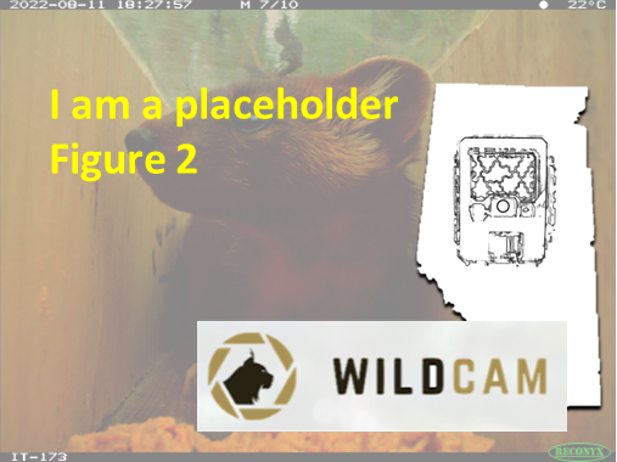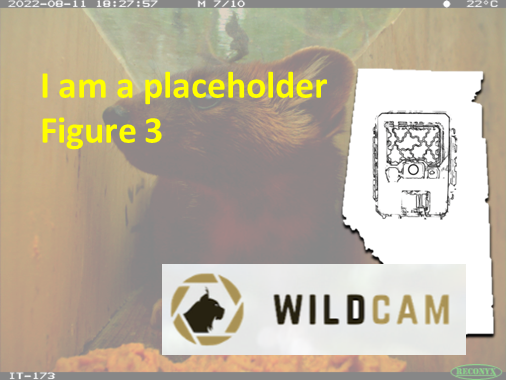Spatial Partial Identity Model (2-flank SPIM)#
Assumptions, Pros, Cons
Same as SCR (Augustine et al., 2018; Clarke et al., 2023)
Capture processes for left-side, right-side and both-side images are independent (Augustine et al., 2018; Clarke et al., 2023)
Same as SCR (Augustine et al., 2018; Clarke et al., 2023)
Improved precision of density estimates relative to SCR (Augustine et al., 2018; Davis et al., 2021; Clarke et al., 2023)
Many study designs can be used (paired sample stations, single camera locations, and hybrids of both paired- and single camera locations (Augustine et al., 2018; Davis et al., 2021; Clarke et al., 2023)
Can be used with single-camera and hybrid sampling designs, and therefore requires fewer cameras (or sample more area) than SCR (Augustine et al., 2018; Clarke et al., 2023)
May be more robust to non-independence than SC (Augustine et al., 2018; Clarke et al., 2023)
Computationally intensive (Augustine et al., 2018; Clarke et al., 2023)
Increased precision is less pronounced in high-density populations (Augustine et al., 2018; Clarke et al., 2023)
Note
This content was adapted from: The Density Handbook, “Using Camera Traps to Estimate Medium and Large Mammal Density: Comparison of Methods and Recommendations for Wildlife Managers” (Clarke et al., 2023)
The two-flank spatial partial identity model (2-flank SPIM) is an extension of camera trap spatial capture-recapture (SCR; see Spatial capture-recapture (SCR) / Spatially explicit capture recapture (SECR). Camera trap SCR uses images of uniquely-identifiable animals to infer the number of activity (or home range) centres in a population, and the area bounding these activity centres – or population size 𝑁 and sampling frame 𝐴, respectively (see How the Model Works in the SCR section Spatial capture-recapture (SCR) / Spatially explicit capture recapture (SECR)). Oftentimes, individual identities are linked to animals using a paired camera sampling design: two cameras are deployed per station, facing each other, to capture the left and right flanks of a passing animal simultaneously. This design ensures that a single identity is Linked to both sides of an individual (i.e., an individual’s identity is completely resolved; Augustine et al., 2018). Single-sided captures (e.g., due to unpaired sampling design, camera failure, unclear images, obstructions) cannot be used to resolve an individual’s identity with certainty, as separate identities can be erroneously assigned to the left and right sides of the same animal. Single-sided images are therefore partially-identifying, and are often excluded from analyses, resulting in loss of data and compromised density estimates (Augustine et al., 2018).
The 2-flank SPIM draws on the locations of partially-identifying images captures to probabilistically resolve animals’ complete identities (Augustine et al., 2018). Partiallyidentifying captures that are many home ranges apart, for example, are not likely to belong to the same individual; left-and-right flank images captured at the same camera station in quick succession, on the other hand, are likely to belong to the same individual (Augustine et al., 2018). Thus, the 2-flank SPIM is essentially an SCR model augmented with data from partially-identifying images (i.e., “SCR+”).
Simulations and Field Experiments
Simulations show that the 2-flank SPIM improves density estimates – especially when populations are small and few individuals can be completely identified (Augustine et al., 2018). Moreover, the 2-flank SPIM performed better when camera stations were regularly spaced and deployed close to one another relative to animals’ home range sizes (Augustine et al., 2018).
In the field: Augustine et al. (2018) found that the 2-flank SPIM improved inference (i.e., accuracy and precision of estimates) for both a paired-camera survey of ocelots and a single-camera survey of bobcats. The 2-flank SPIM also produced estimates of leopard and spotted hyaena density that were more precise than SCR (Davis et al., 2021).


Type |
Name |
Note |
URL |
Reference |
|---|
Augustine, B. C., Royle, J. A., Kelly, M. J., Satter, C. B., Alonso, R. S., Boydston, E. E., & Crooks, K. R. (2018). Spatial Capture-Recapture with Partial Identity: An Application to Camera Traps. The Annals of Applied Statistics, 12(1), 67-95. https://doi.org/10.1214/17AOAS1091
Clarke, J., Bohm, H., Burton, C., Constantinou, A. (2023). Using Camera Traps to Estimate Medium and Large Mammal Density: Comparison of Methods and Recommendations for Wildlife Managers. https://doi.org/10.13140/RG.2.2.18364.72320
Davis, R. S., Stone, E. L., Gentle, L. K., Mgoola, W. O., Uzal, A., & Yarnell, R. W. (2021). Spatial Partial Identity Model Reveals Low Densities of Leopard and Spotted Hyaena in a Miombo Woodland. Journal of Zoology, 313, 43-53. https://zslpublications.onlinelibrary.wiley.com/doi/epdf/10.1111/jzo.12838

